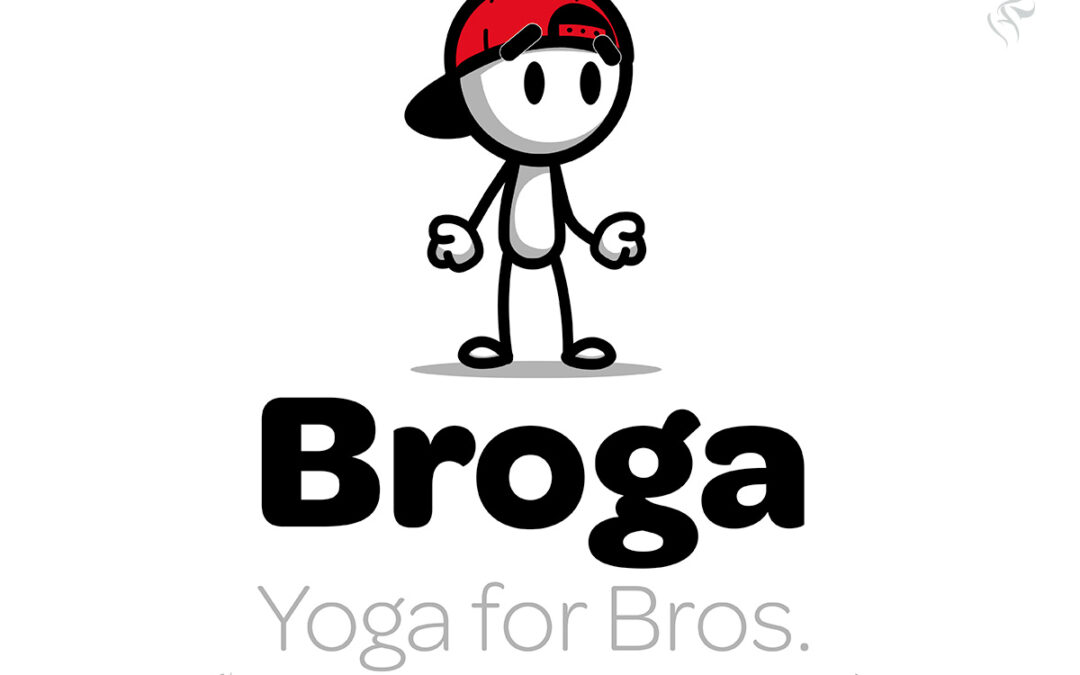In the innovative project of developing a unique identity for Broga—a fresh and dynamic fusion of yoga and bodybuilding tailored specifically for men—the team embarked on a creative journey to design a logo that encapsulates the essence of this “broey” brand. ThinkTank already actively uses ChatGPT for a variety of tasks, but we wanted to test it’s Logo Making capabilities, mostly for fun! The resulting concept art was so spot on, we wanted to share the full process in this Case Study.
Summary
- ThinkTank partnered with ChatGPT to design a logo for Broga: Yoga for Bros, showcasing a fusion of human creativity and AI’s capabilities.
- Utilizing ChatGPT for initial visual concepts significantly accelerated the brainstorming process, swiftly translating specific visions into near-final “digital sketches.”
- The transition from AI-generated sketches to professional vector graphics highlighted the synergy between AI’s speed and human expertise in achieving polished designs.
- The project demonstrated AI’s efficiency in design while affirming the irreplaceable value of human expertise in finalizing comprehensive brand identities.
The Creative Process—Concept Art with ChatGPT
The journey from concept to final design was a testament to the power of collaborative innovation between human intuition and AI’s computational creativity. Initially, the process began with brainstorming sessions that defined the core values and aesthetic goals of the Broga brand. Seeking a design that was both engaging and reflective of the brand’s ethos, we turned to AI to generate initial visual concepts as a simple exercise to see what it could do.
This is different than using Artificial Intelligence (which will frequently be confused with Adobe Illustrator in our conversations) to assist with concept art versus producing the full brand system.
Using detailed prompts that encapsulated the desired “bro” vibe—casual, approachable, yet distinctly masculine—AI tools were employed to create a series of stick-figure character sketches. These characters, envisioned as mascots for the brand, combined playful elements with a nod to traditional yoga and bodybuilding poses. Each iteration brought forward by the AI was reviewed, and feedback was iteratively applied, refining the character’s appearance from a generic stick figure to a more defined persona, complete with a backwards hat to signal a laid-back, yet focused attitude.
Challenges and Solutions
Throughout the design process, several challenges emerged, primarily related to translating the abstract concept of Broga into a visually compelling logo. One significant hurdle was ensuring the character could ready for motion design, capable of actually demonstrating various yoga and bodybuilding poses while retaining its broey charm.
ChatGPT’s DALLE only outputs bitmaps, which are not the appropriate vector format for “professional graphic design.”
The solution is to simply use the output from the GPT as a “sketch” then to outline the necessary vectors by hand in Adobe Illustrator. This step would have been necessary for this particular project anyway because of the very specific nature of file required for motion design in the future.
The Role of Artificial Intelligence (AI)
AI’s role in this project was multifaceted. First, time was spent “training” (or “conversing” if you prefer) ChatGPT (with Dalle) and brainstorming the initial concepts of Broga, which had been noodling around in our heads for a while. In fact, an entire initial set of Brand Standards (like Voice and Tone standards) were produced based on this initial, perhaps 5000 word, conversation.
Then, for funzies, we gave our first prompt:
“As an exercise, I’d like you to have a try at generating a few options on my stick figure fellow. He’s a cartoony stick figure with circles as hands, feet, and head. He’s wearing a backwards hat. He’s a bro-figure…. Maybe he’s slouching a bit.
Try a few iterations, simple line art, perhaps adding color to the hat only. (I was thinking red.) What do you see? “
GPT4 Prompt
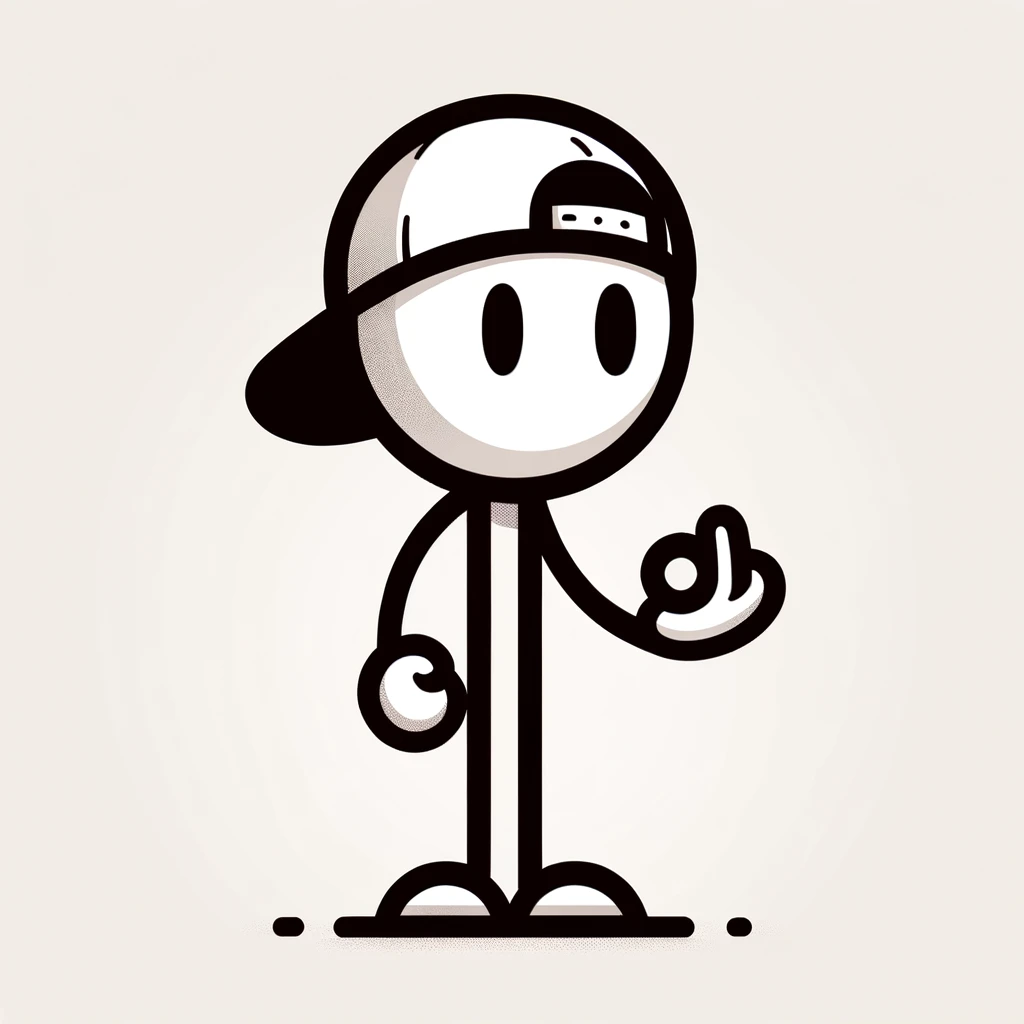
Now this really was just for fun, but the initial concept was so spot-on we practically freaked! It wasn’t quite right, but wow, that took 5 seconds. So we retuned the prompt a bit, and encouraged ChatGPT to have a few more tries, which were all “pretty close, but not quite.”
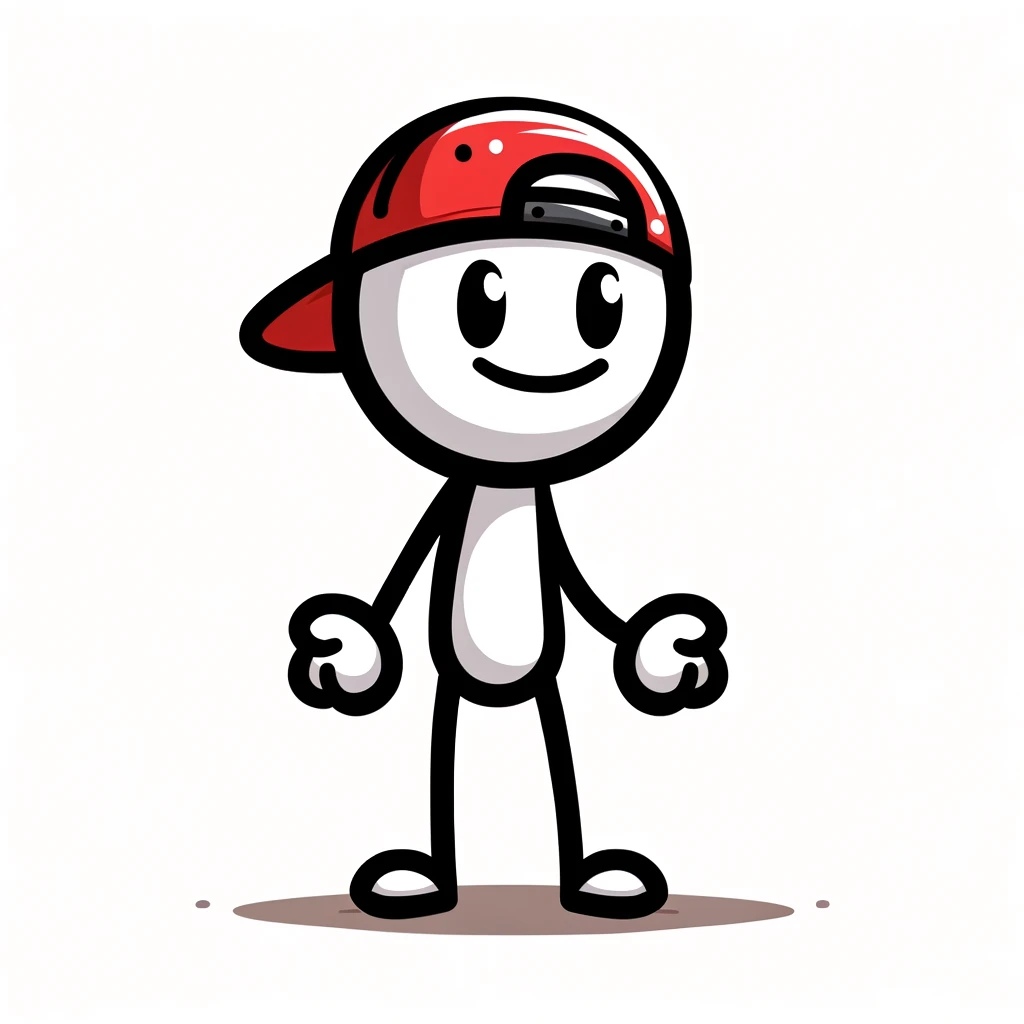
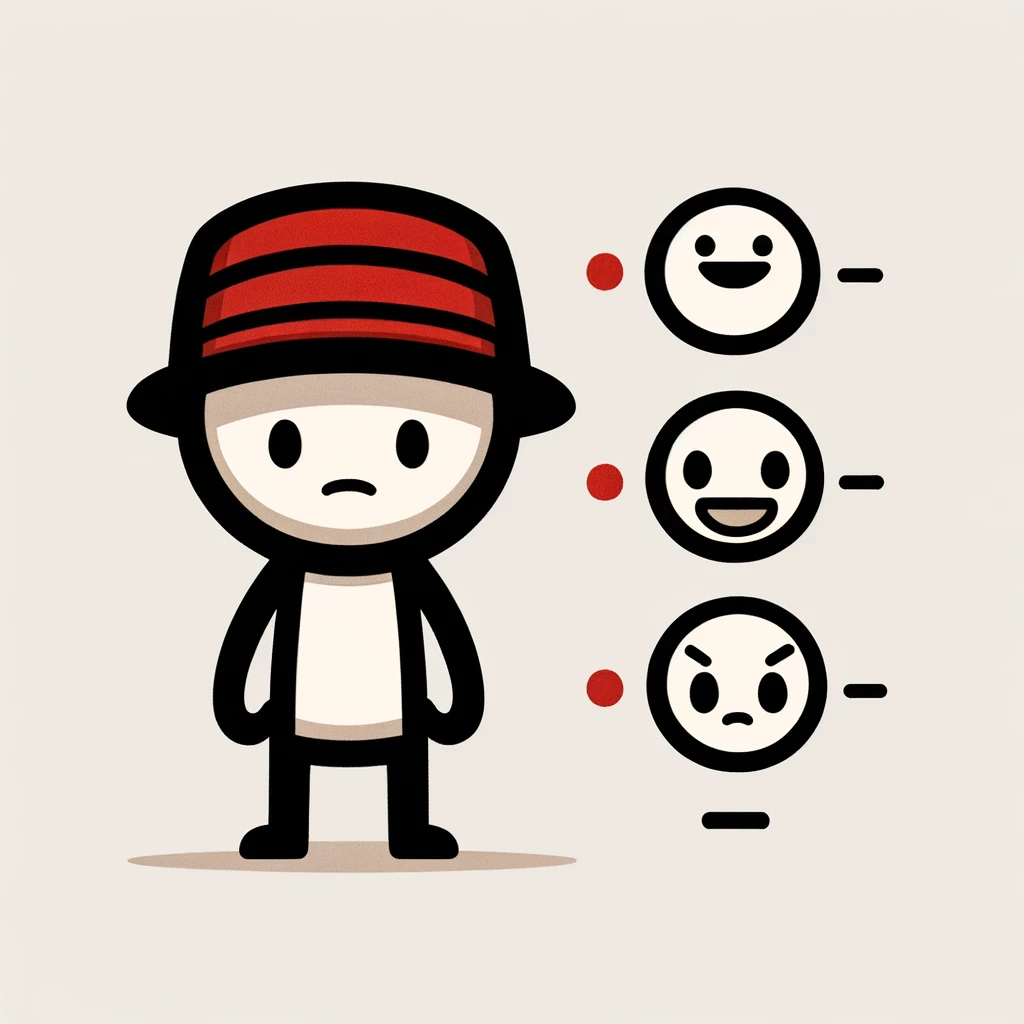
Now, insofar as the creative process (without Artificial Intelligence) these pictures amount to “brief sketches,” or “thumbnailing” if you’re a Graphic Designer. Even though they are marvelously complete, there are still several steps that remain to make it a “logo.” But! Hours and hours of hand drawing concept art was saved because of a specific vision that translated readily into the right words interpreted by ChatGPT.
ChatGPT’s Dalle vs Adobe Illustrator’s Artificial Intelligence
As noted, ChatGPT’s Dalle was used to generate these “AI sketches.” But, it’s entirely possible to have given the prompt a try in Adobe Illustrator beta’s generative artificial intelligence…(AI’s AI for short…yep). The advantage is that it actually produces finished vectors vs bitmaps (which would negate several of the next steps).
However, experience has shown that, when it comes to quickly producing concepts, ChatGPT is superior. It’s easier to go to Adobe Illustrator’s generative artificial intelligence when you already have a specific idea of what you want to create. Furthermore, this particular logo is intended for Motion Design in the future, and more precise control over said vectors is necessary than what AI’s AI allows.
A Note on the Ownership of Intellectual Property
There is an note here about the ownership of the Intellectual Property of objects produced by Artificial Intelligence, specifically ChatGPT and Adobe Fire Fly (which is the engine behind Adobe Artificial Intelligence).
OpenAI specifically guarantees that all outputs and inputs are owned by the “prompter.” So you can’t, like, use that concept art above because it is under thinktank’s copyright since we requested the prompt. There may be some legal question about whether OpenAI is responsible for compensating the original owners of the various things that ChatGPT has been trained on—which is a matter for the courts—but if the output is unique, then that’s that.
Adobe Fire Fly is even more straight forward. You still own your inputs and outputs, but Firefly is trained on data from Adobe Stock. They may have not exactly been like “hey, we’re using your art to train AI!” but Adobe definitely compensated the artists that post to Adobe Stock for the right to train Firefly.
It’s a brave new world. Long live copyrights!
The Role of Adobe Illustrator (…also AI)
After concluding the collaborative phase with ChatGPT, the project took on a new dimension as the team transitioned from concept art to a finalized logo design. The AI-generated images, inherently bitmap in nature, served as a creative springboard. It was then up to human ingenuity to translate these bitmaps into vector graphics—a necessary step for creating scalable, professional logo designs.
Utilizing Photoshop, the best elements of the AI-generated concepts were amalgamated into a cohesive “sketch” that captured the desired aesthetic and ethos of the Broga brand. Fonts were chosen from fons.adobe.com and, as it happened, we chose “omnes…” which we only realized today, most appropriately, starts with “om.”
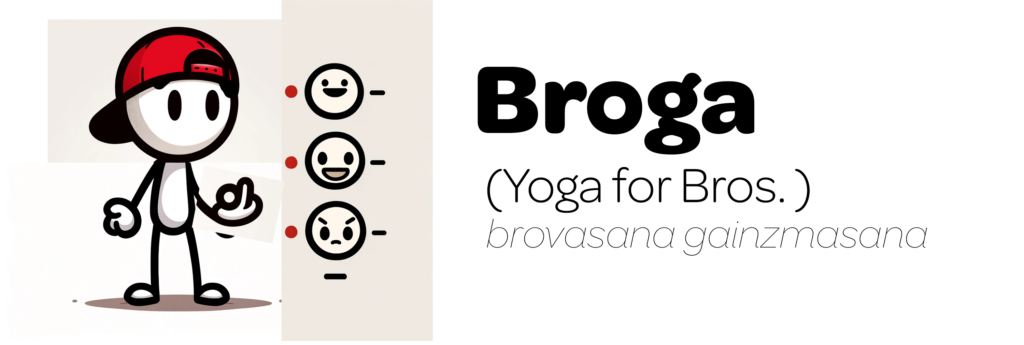
This “sketch” was then brought into Adobe Illustrator, where it was refined into a vector format, allowing for precise adjustments and scalability. The finalization process involved selecting the most effective version for public display, balancing the need for editability with the brand’s visual messaging. The transition from AI-generated bitmaps to manually crafted vectors underscores the complementary relationship between AI’s generative capabilities and human expertise in achieving a polished, professional logo design that resonates with the target audience and embodies the spirit of Broga.
The Final Graphic Design
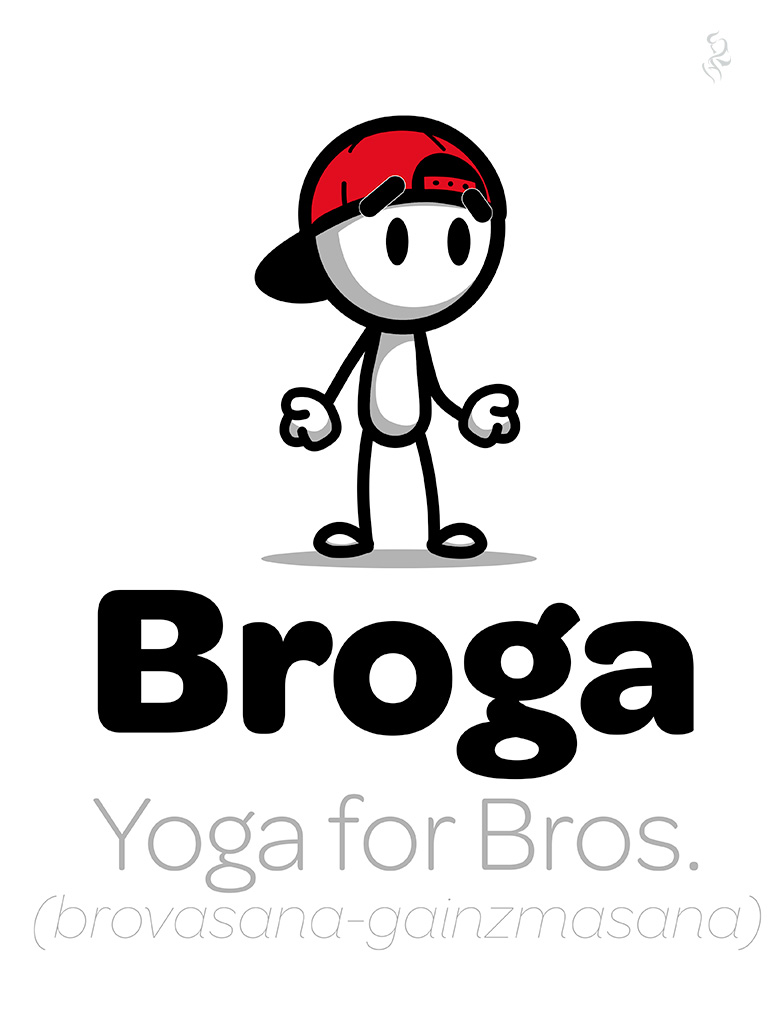
Ultimately, the final logo was what we were visualizing from the beginning. Thanks to AI, producing this concept into something workable took significantly less time.
This image was generated from vectors, and it is also ready to be further developed for animation. We want that bro actually doing broga eventually, it’s going to be sick.
Reflections and Learning on AI Collaborations
The important thing to remember here is that Artificial Intelligence didn’t do this for us, it helped a whole lot and significantly reduced the amount of time it would take to produce.
But when it comes to making a full brand system—all the things you need to make a consistent brand that translates into all the things for your business—there is a ton more work required than what Artificial Intelligence is currently capable of.
This means you still need graphic artists, friends! You need them to edit, coordinate, and give a greater context to the things you produce.
… But yeah, meanwhile, producing all of this with ChatGPT in record time was so freaking cool, we had to tell y’all about it.
